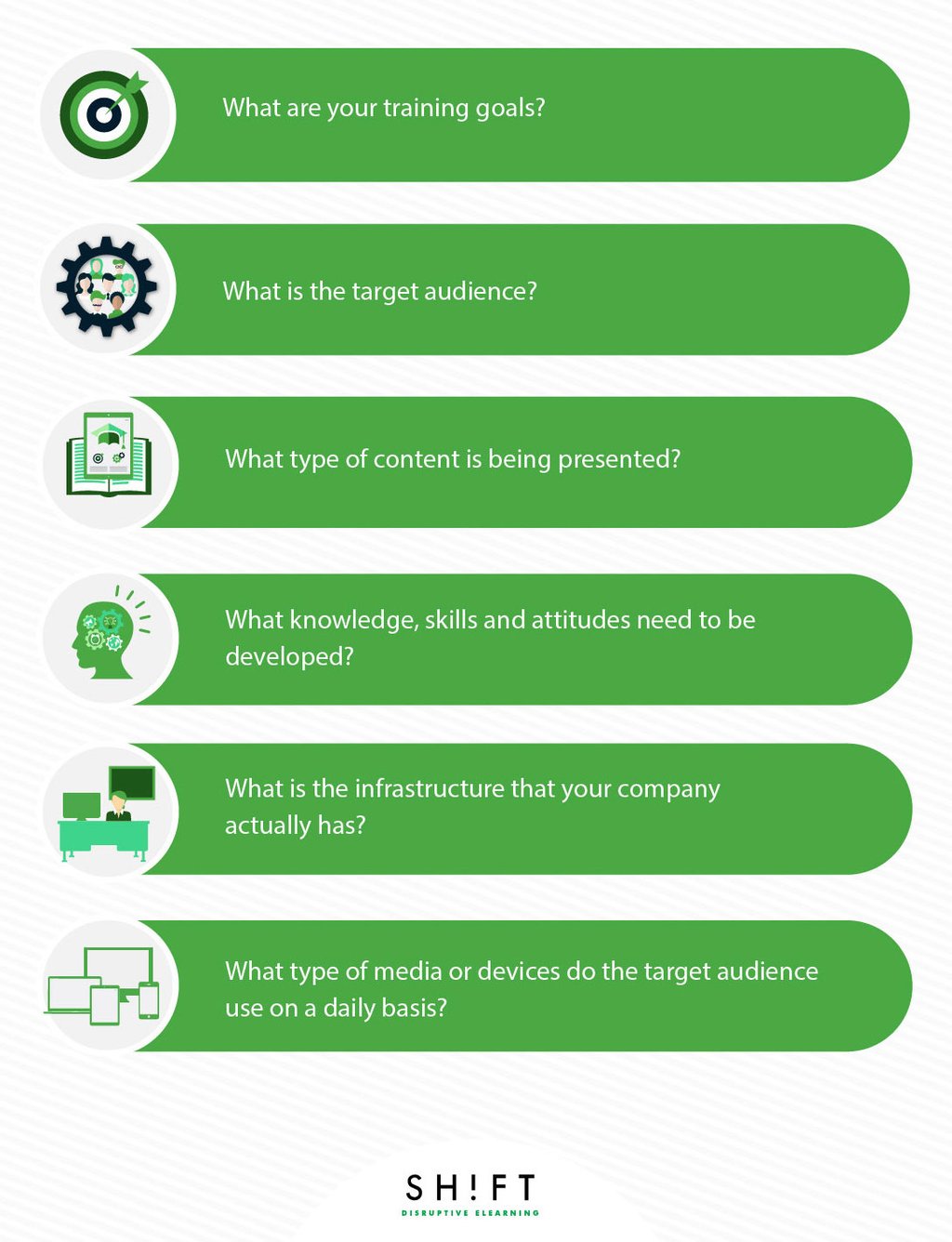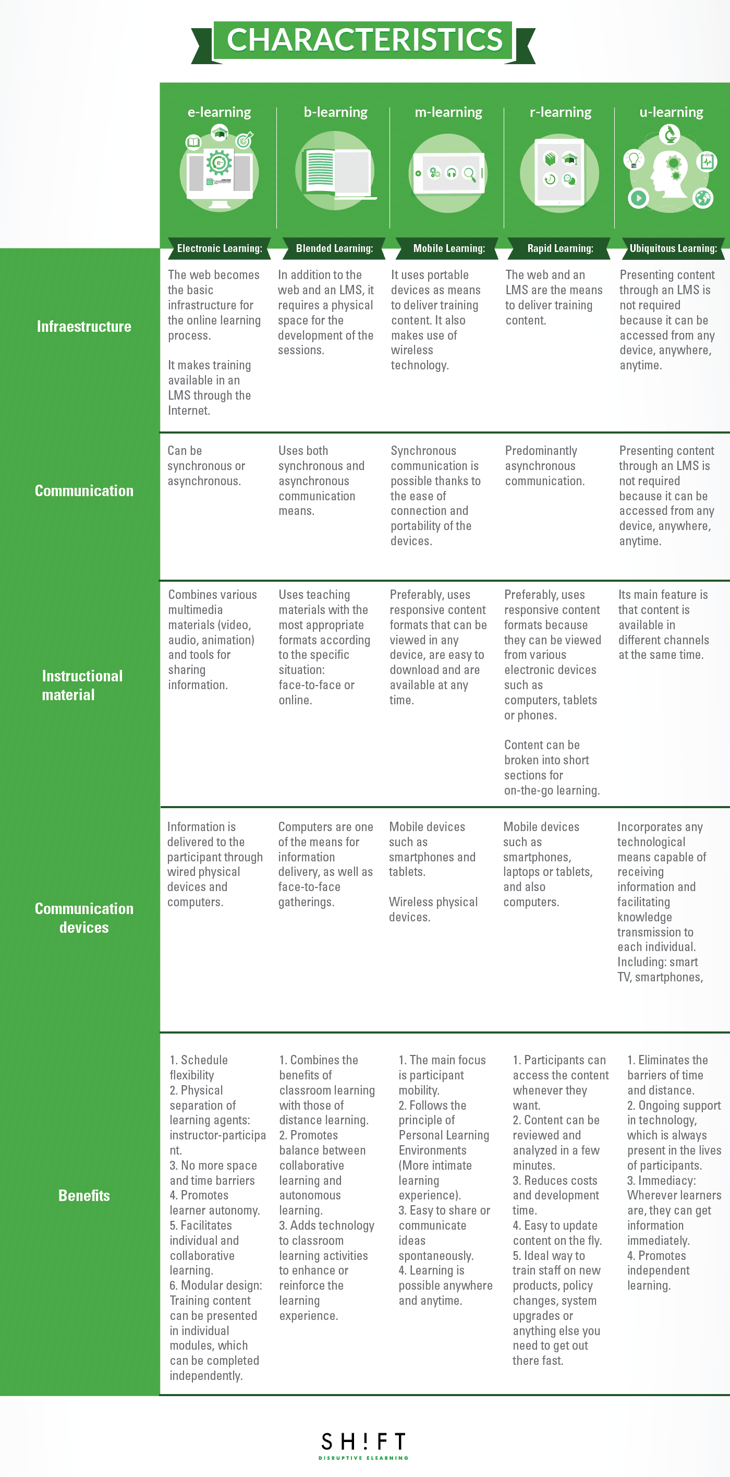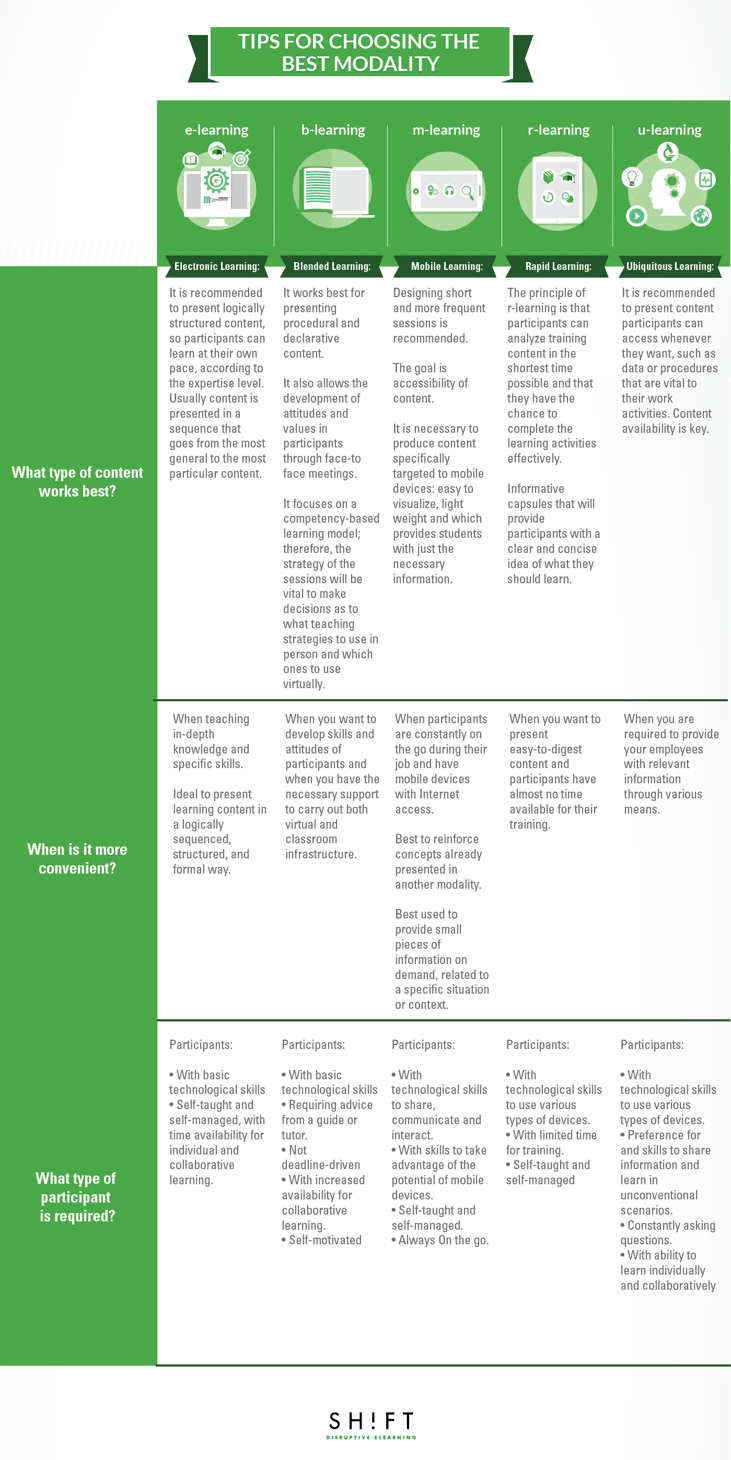Does your company need to implement a virtual training program?
If this is the case, you've probably done a lot of research on the subject, including providers, tools, and methods. By now you’ve probably discovered there are so many different forms of virtual training available, from eLearning, mobile learning, to blended learning courses. Each method has its own benefits and its best use cases.
If you’re wondering which modality is more effective; there is no easy answer for that. Making a decision comes down to the individual needs of the company, as well as the expected organizational outcomes.
So, before resuming your research, ask yourself this question: What are your company’s training needs?
Answering this is the first step to choosing the option that best suits what you really need for your company. It will also help you gather the right information to support and build the business case for your training project.
How to Choose the Best Option?
Picking the right virtual training method for your company does not involve just deciding over the most innovative or latest trend; as leader of a training project, you should ask yourself the following questions too:
- What are your training goals? (Update Skills? Teach new skills? Change workplace behavior? Compliance?)
- What is the target audience? (New hires? Upper management?)
- What type of content is being presented?
- What knowledge, skills and attitudes need to be developed?
- What is the infrastructure that your company actually has?
- What type of media or devices does the target audience use on a daily basis?

Types
Now, get to know the different virtual training modalities and make the best decision for your business:
- E-learning (Electronic Learning): Self-paced, web-based learning approach in which participants use technology to access training. No instructor is involved. It is delivered asynchronously. Students have control over the time, place or pace.
- Blended Learning: A hybrid approach that combines scheduled, synchronous, traditional classroom settings and asynchronous, non-scheduled virtual or digitally enabled learning.
- Rapid eLearning: Contemplates the use of tools and applications to deliver learning, in short, quick electronic-based modules. The term makes reference to the speed at which a course can be completed by a course participant. Often it is also referred to as “Bite Size” learning.
- Mobile Learning: learning delivered through mobile devices such as smartphones or tablets. The key here is not the device; it’s student mobility.
- Ubiquitous learning: Ubiquitous learning is the evolution of mobile learning. It involves making training available across all channels, anywhere and anytime. Learning activities are embedded in daily tasks. More on this topic here.
Characteristics
Then, let’s identify the specific characteristics of each virtual training modality:

Tips for choosing the best virtual learning modality

REFERENCES:
Aretio, L. G. (2004). Aprendizaje Móvil, m-learning. Boletín Electrónico de Noticias de Educación a Distancia.
Aretio, L. G. (2004). Blended Learning, ¿Enseñanza y aprendizaje integrados? Boletín Electrónico de Noticias de Educación a Distancia.
Aretio, L. G. (2004). Blended Learning, ¿Es tan innovador? Boletín Electrónico de Noticias de Educación a Distancia.
Cabero, J. (2006). Bases pedagógicas del e-learning. Revista de Universidad y Sociedad del Conocimiento . UNESCO.
Conde González, M. Á. (2007). mLearning, de camino hacia el uLearning. Tesis de Máster . Salamanca: Universidad de Salamanca.
Contreras Bravo, L. E., González Guerrero, K., & Fuentes López, H. J. (2011). Uso de las TIC y especialmente del Blended Learning en la enseñanza universitaria. Revista Educación y Desarollo Social .
Hernández, T. (2009). Educación sin tiempo: ¿M-learning o U-learning en la Investigación y Docencia? Universidad Rafael Belloso Chacin.
Pérez, V. R., Ortíz, A. P., & Lugo, L. E. (2014). Conceptos para el desarrollo de un modelo de formación en competencias tecnológicas para Colombia. HALLAZGOS (22) . Bogotá: Universidad Santo Tomás.
Zambrano, J. (2009). Aprendizaje móvil (m-learning). Bogotá: Inventum.
State of Employee Training 2015 - Infographic https://www.westuc.com/en-us/blog/digital-media-services/state-employee-training-2015-infographic



